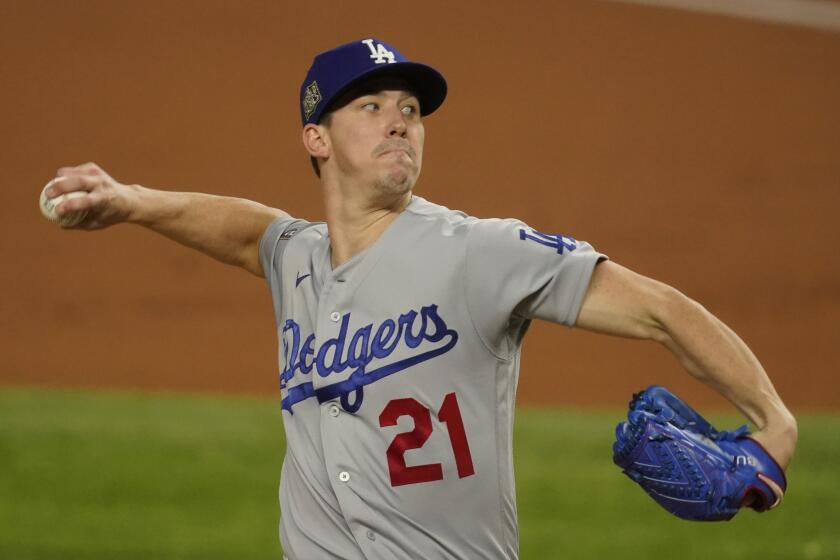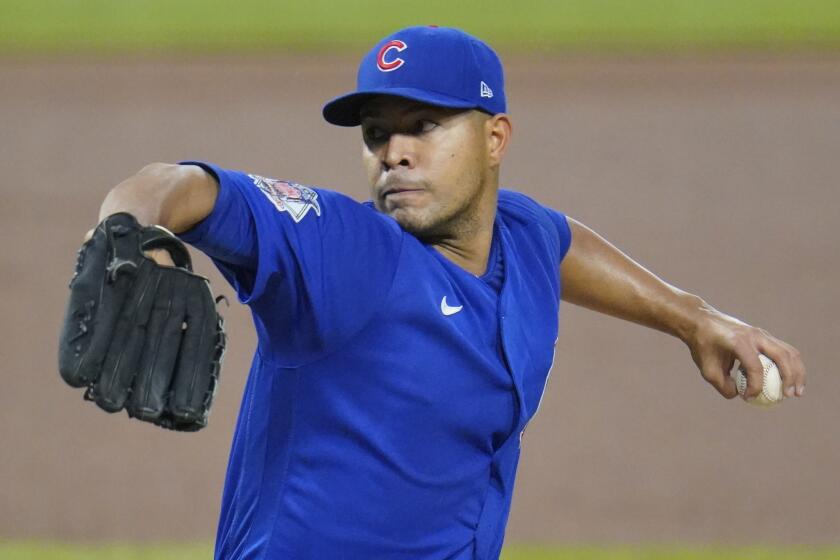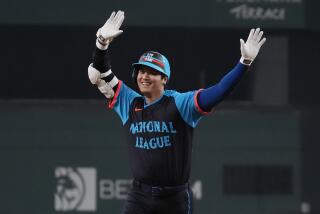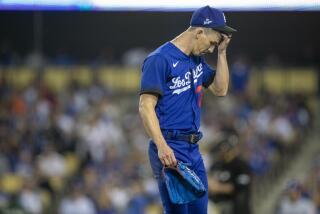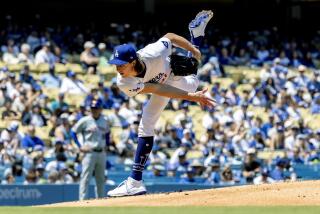MLB is deadening baseballs to liven up the game. Pitchers and managers approve
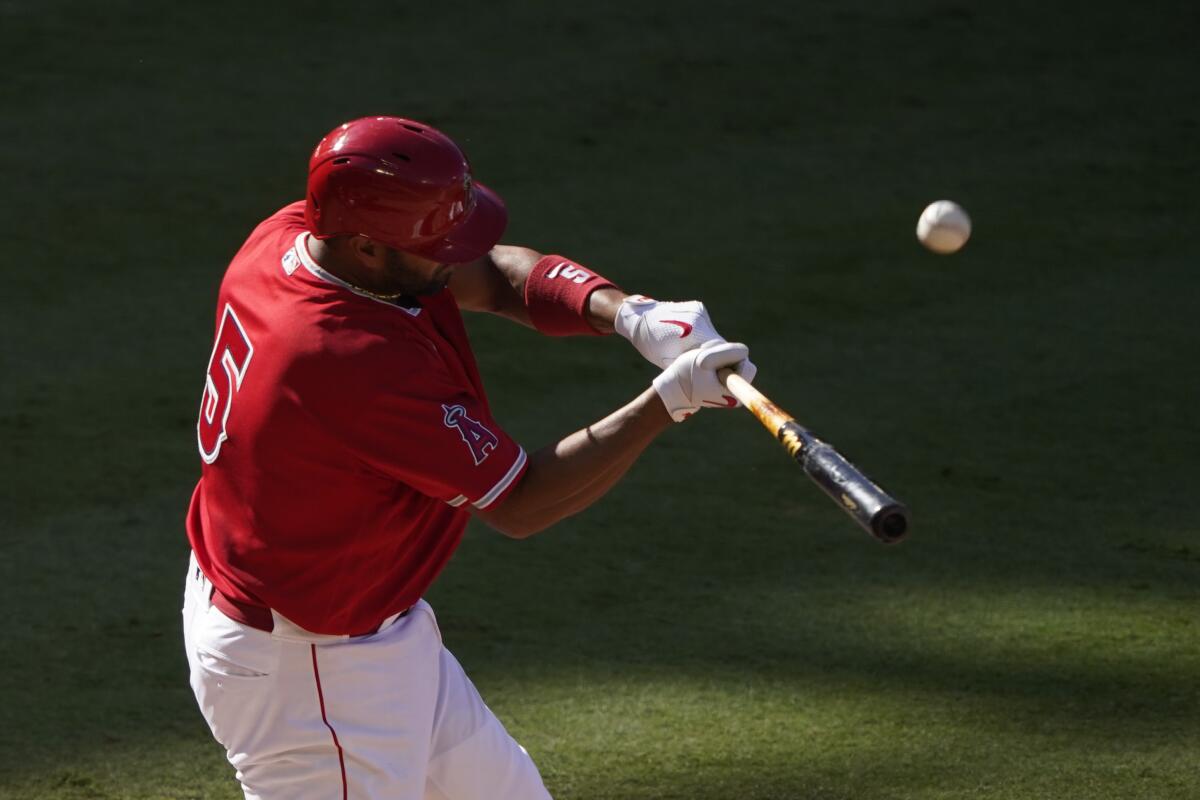
- Share via
Joe Maddon loves a good hit-and-run play, a timely stolen base, a well-executed sacrifice bunt, a choke-up-on-the-bat, two-strike bloop hit to shallow right field.
The Angels manager may have gained notoriety for his new-age motivational techniques and early embrace of analytics, but when it comes to baseball’s on-field product, he is old school to the core.
That’s why Maddon, 67, welcomed recent news reports that Major League Baseball had slightly deadened the ball this season amid a six-year surge of home runs.
The changes are so subtle that they may result in fly balls traveling only one to two feet shorter when hit more than 375 feet, but if that pushes baseball one small step toward its more traditional roots, it would be one giant leap for the game, in Maddon’s eyes.
“I’m hoping it impacts the game a lot,” Maddon said. “We’ll see how it works out this year, but if, in fact, the ball doesn’t travel as far, it will change the analytics of the game, and a lot of things will change off that.
“Strategically speaking, it will put more emphasis on speed, on hitting the ball the other way, especially with two strikes, on contact. Strikeouts will be more disdained, like they were in the past. Pitchers might challenge hitters more because they want the ball in play, and they won’t walk as many guys.”
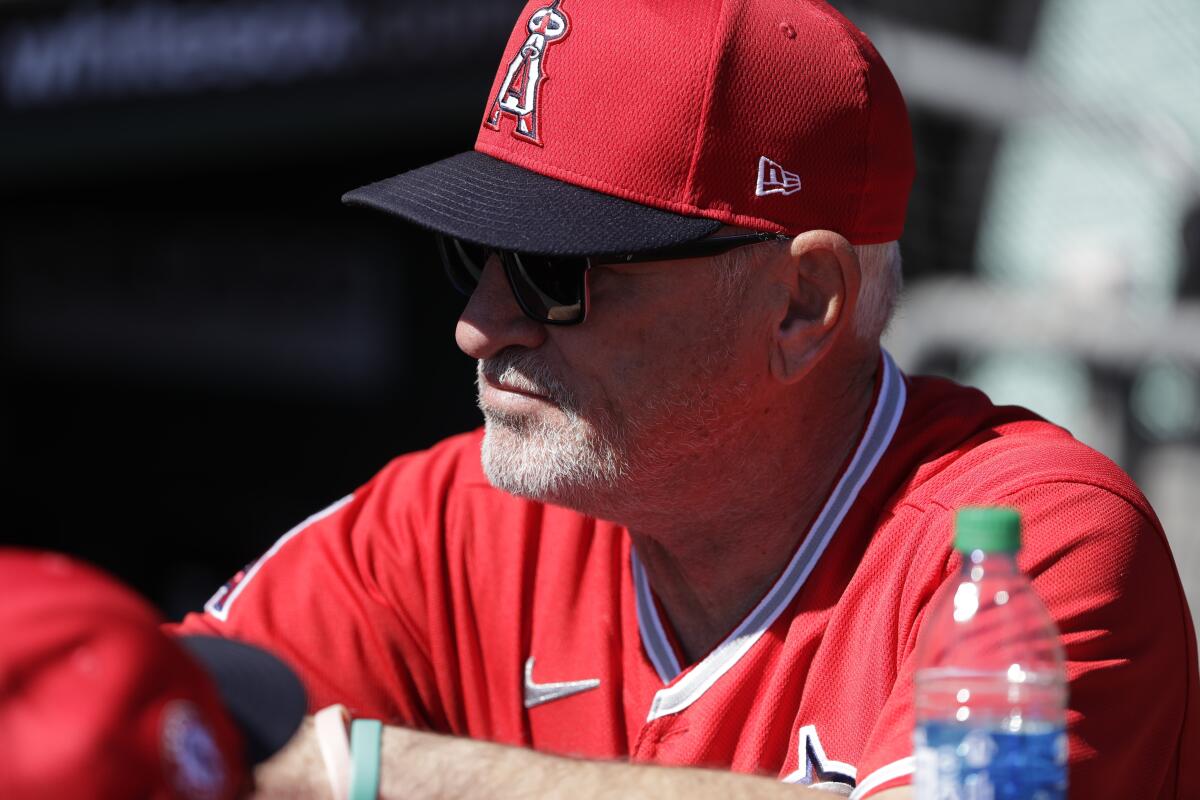
A (fastball-down-the) pipe dream? Perhaps, but Maddon, who has spent more than four decades in a sport that has fallen behind the NFL in popularity and television ratings and suffers from a lack of action, thinks it’s worth pursuing.
“You never know until you actually try something,” he said. “I think part of the disinterest in the game today is that it’s been reduced to small patterns of striking people out, accepting walks and trying to hit home runs. When you change the ball, we can go back in time to where we had a better brand of baseball.”
Many think the preponderance of baseball’s three true outcomes — the home run, the walk and the strikeout — is harming the sport.
A major league record 6,776 homers were hit during the 2019 regular season, and the rate of homers fell only slightly in the pandemic-shortened 2020 season, from 1.39 per team a game in 2019 to 1.28 per team a game last season.
The current home run surge began in 2015, when homers jumped to 4,909 from the 4,186 hit the previous season. There were 5,610 homers hit in 2016, 6,105 homers hit in 2017, and 5,585 homers hit in 2018.
Batters also set strikeout records in the past three full seasons, with 40,104 whiffs in 2017, 41,207 whiffs in 2018 and 42,823 whiffs in 2019. Through 1997, baseball had never seen more than 30,000 strikeouts in a season. Walks jumped from 15,088 in 2016 to an average of 15,803 from 2017 to 2019.
Dodgers starting pitcher Walker Buehler says he changed his offseason regimen to avoid the slow start he experienced each of the last two years.
“The overall feeling I’ve gotten from friends and family and fans that I’ve talked to is that, yeah, seeing home runs is almost like watching the NBA and guys throwing up three-pointers all the time,” said Rich Hill, a 40-year-old pitcher who recently signed with the Tampa Bay Rays.
“It understandably has a point to it, but strategically, if we want to continue to grow the health of the game, we might want to rethink where we are right now. And I don’t think I’m the only one who feels that way.”
Hitters are bigger and stronger and have a more discerning batting eye, and the dramatic increase in defensive shifts in the last six years pushed many to alter the launch angles of their swings to generate more loft. Their logic is sound: A home run beats the shift every time.
With balls jumping off bats and so many hitter-friendly parks throughout the league, home runs were bound to increase. Slight variations in the ball also affected slugging. Many pitchers complained in 2019 that flatter seams forced them to change grips and reduced the drag on the ball in flight.
Dodgers manager Dave Roberts recalled the frustration his pitchers would have when they’d execute a two-strike down-and-away fastball, only to have the hitter flick his bat at the ball and hit an opposite-field homer.
“I haven’t dug too much into it, but there have been many pitchers in our camp who have expressed their feelings as far as last year’s baseball being a lot harder and the strings wound a lot tighter than they potentially will be this year,” Roberts said. “So it’s a welcome thing for pitchers.”
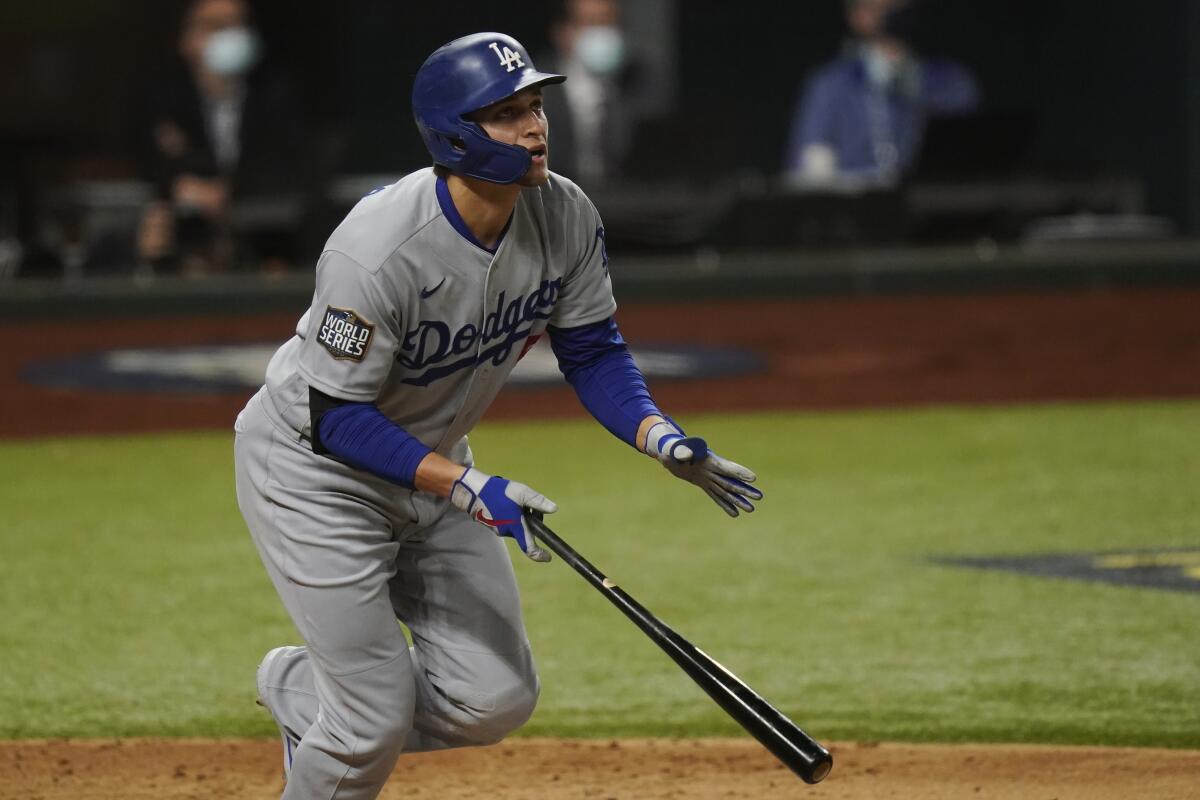
Baseball’s attempts to bring uniformity to the construction of official Rawlings baseballs, which are hand-sewn in a factory in Costa Rica, could reduce the year-to-year swings in home run rates and level the playing field between pitchers and hitters.
A Feb. 5 memo sent from MLB to general managers, assistant GMs and equipment managers outlined the changes that could reduce slugging slightly in 2021. The memo’s contents were first reported by the Athletic and confirmed to The Times by a person familiar with the matter.
Rawlings has loosened the tension of the first of three wool windings around the center of the ball, which reduced the weight of the ball, by less than one-tenth of an ounce — or 2.8 grams — as well as the bounciness of the ball.
“MLB has engaged a committee of scientific experts over the last couple of years to study the baseball,” a league official said, “and one of the recommendations of the committee was to narrow the manufacturing specifications of the ball in order to improve the consistency of performance.”
Five teams also plan to add humidors this season, bringing to 10 the number of stadiums that will store baseballs in humidity-controlled cabinets. The Colorado Rockies, Arizona Diamondbacks, Seattle Mariners, New York Mets and Boston Red Sox already have humidors.
The memo did not identify the five teams adding humidors, but officials with the Angels and Dodgers both confirmed they were not adding them.
“I’m pretty stoked for it — I think it’s awesome news,” Rays ace Tyler Glasnow said of the changes to the ball. “It’s funny. Every pitcher knew that the balls got tighter. I don’t know if ‘juiced’ is the word … but it was just weird that everybody denied the ball was juiced, and now they’re like, ‘Well, they’re dead again.’ Well, what happened before?
“It’s just a weird scenario, but personally, it’s great. I’d love to not have more home runs hit off me. So be it. I don’t care. Make them dead.”
Veteran right-hander Yu Darvish, traded from the Chicago Cubs to the San Diego Padres this winter, noticed in his first bullpen workout of spring training that the baseball felt “a little bigger. I don’t know how much less it’s going to fly, but as a pitcher, you don’t want the ball to fly that much.”
Hitters will likely wait to see how the new ball carries before altering their approach. It will take weeks, probably months, to determine whether a slightly deader baseball will have an appreciable effect on how the game is played.
After a kitchen accident partially derailed his final season with the Chicago Cubs, pitcher José Quintana is eager to get back on track with the Angels.
“Until we spend some time with the baseball and really get to know it, we’re not going to be able to answer that question,” Milwaukee Brewers manager Craig Counsell said. “I think it’s interesting that, to me, the fact we’ve made a change means that something was different. It’s almost an acknowledgement that there was something different.”
Counsell doesn’t believe livelier baseballs have given hitters an advantage, not with so many starters and relievers throwing 95 mph or harder and filling out their repertoires with an assortment of nasty sliders, curveballs, cut-fastballs and changeups.
If anything, the all-or-nothing approach of so many hitters, who rarely shorten their swings with two strikes, plays right into the pitchers’ hands.
But like Maddon, Counsell thinks the game will benefit from more balls in play.
“I think the game is skewed toward the pitchers right now, and by a lot, actually,” Counsell said. “I think the question is, would I like the game to skew toward more action? And that would be yes.”
More to Read
Go beyond the scoreboard
Get the latest on L.A.'s teams in the daily Sports Report newsletter.
You may occasionally receive promotional content from the Los Angeles Times.

